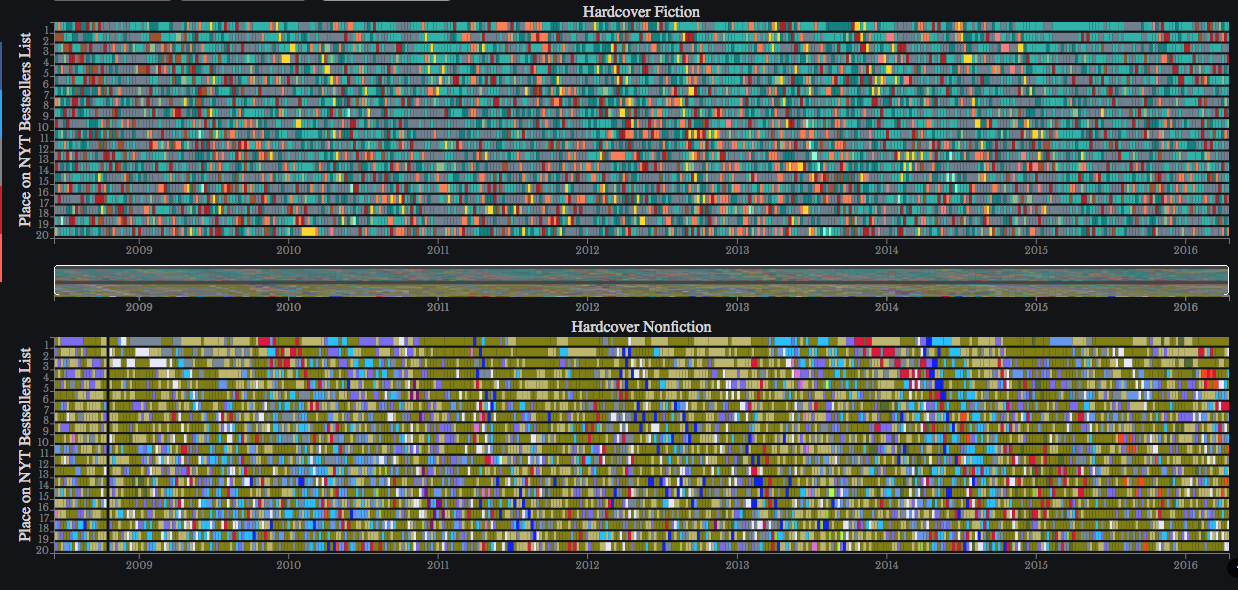Scientists decode what makes a New York Times bestseller

Landing a book on The New York Times bestseller list is one of the loftiest achievements an author can hope for. And there’s a science behind which books make it—and which don’t.
In a paper published Thursday in the journal EPJ Data Science, Northeastern network scientist Albert-László Barabási and his colleagues analyzed nearly 4,500 Times bestsellers, offering insight on what it takes to make the list. They also developed a model that uses early sales data to predict how many copies a book will sell over time.

The researchers found that most books on the bestseller list followed a similar sales pattern. The vast majority of copies were sold within the first few weeks of a book’s release, and after ten weeks, sales dropped dramatically.
“Virtually all Times bestsellers are built up from week one,” said Barabási, Robert Gray Dodge Professor of Network Science and Distinguished Professor of Physics and director the Center for Complex Network Research. “If you don’t have that momentum properly orchestrated for the book, you may sell lots of copies, but you will not make the list.” And most books only remain on the bestselleter list for one week, said Burcu Yucesoy, a researcher at the Center for Complex Network Research and lead author of the study.
This sales pattern remained consistent across genres. But the actual number of copies an author needs to sell to make the list varied by season. For example, in February, it takes selling as few as 3,000 copies to become a bestseller, Barabási explained. In late December—when people are buying books as gifts for the holidays—it takes more than 10,000 copies sold to make the list.
Authors and publishers can also use the model described in the study to predict future book sales, as long as they have weekly sales data collected a few months after the release of a book. Researchers developed the formula for a previous study on predicting scholarly success from citation data and found that it could be applied to book sales, as well.
Virtually all Times bestsellers are built up from week one. If you don’t have that momentum properly orchestrated for the book, you may sell lots of copies, but you will not make the list.
Albert-László Barabási, Robert Gray Dodge Professor of Network Science and Distinguished Professor of Physics and director the Center for Complex Network Research
The researchers also uncovered disparities between fiction and nonfiction books.
“To our surprise, we find that the fiction bestseller list is dominated by repeat authors,” Barabási said. Of the 2,468 fiction titles that made the list from 2008 to 2016, there were only 854 authors, most of whom had at least two books on the list. Several prolific fiction authors were shown to write bestsellers consistently, including James Patterson, who published 51 bestsellers in eight years.
In nonfiction, however, there are very few repeat authors, with the exception of those who write books in a series format. For example, Bill O’Reilly has authored nine bestselling nonfiction books about the murders of various celebrities, said Yucesoy. She added that the audience for those types of books is likely to read all of them, explaining the repeat bestseller status.
There are also few female authors in nonfiction, the researchers found.
“Within fiction, there is a complete gender balance, but there is a lack of gender balance in nonfiction,”Barabási said.
Researchers don’t have a mechanistic explanation for why this is the case, but Barabási said it could be explored in a future study.
The analysis found that books from certain genres within fiction and nonfiction were represented on the bestseller list more than others. The Suspense/Thrillers category was the most popular genre in fiction, while the Biography/Autobiography/Memoir category was most popular in nonfiction. Barabási said this information might be useful to authors looking to land their book on the bestseller list.
“If you’re thinking about writing a book and you have quite a bit of freedom in what you can do, I think you can use these patterns to guide that decision,” Barabási said.





